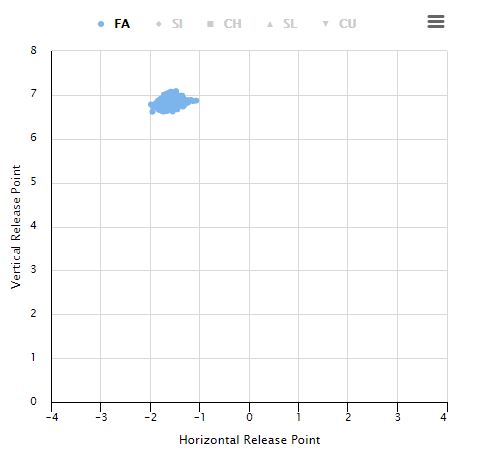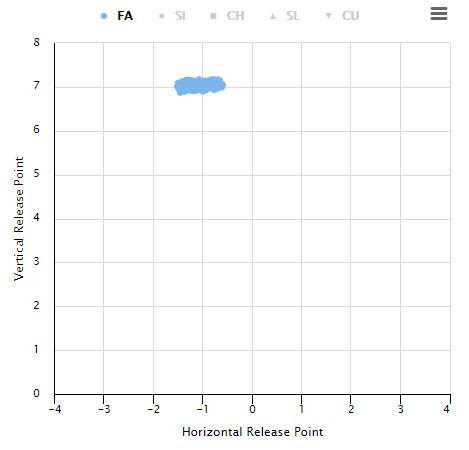The National League MVP Race Is Wide Open
Two weeks ago, Fernando Tatis Jr. had what looked to be an insurmountable National League WAR-lead. Here’s what our NL position player leaderboard looked like before action got underway on Monday, September 7:
| Name | PA | HR | wRC+ | BsR | Off | Def | WAR |
|---|---|---|---|---|---|---|---|
| Fernando Tatis Jr. | 195 | 15 | 181 | 2.5 | 22.8 | 3.5 | 3.3 |
| Mike Yastrzemski | 185 | 8 | 164 | 1 | 16.3 | 0.9 | 2.3 |
| Ian Happ | 163 | 12 | 181 | 0.6 | 17.5 | -1.2 | 2.3 |
| Mookie Betts | 173 | 13 | 171 | 1.7 | 17.5 | -0.5 | 2.3 |
| Trea Turner | 179 | 9 | 172 | 0.1 | 16.6 | 0.5 | 2.1 |
| Manny Machado | 190 | 12 | 142 | -0.4 | 9.7 | 2.7 | 1.9 |
| Trevor Story | 180 | 9 | 127 | 3.5 | 9.8 | 3 | 1.9 |
| Michael Conforto | 179 | 7 | 174 | -0.6 | 16.5 | -2.1 | 1.8 |
| Freddie Freeman | 175 | 7 | 166 | 0.2 | 15.1 | -1.3 | 1.8 |
| Trent Grisham | 187 | 8 | 124 | -0.4 | 5.4 | 5.4 | 1.7 |
| Corey Seager | 154 | 11 | 169 | -1.2 | 12.3 | -1.5 | 1.6 |
| Paul Goldschmidt | 134 | 4 | 168 | 0.5 | 12.2 | -1.6 | 1.6 |
| Jake Cronenworth | 135 | 4 | 150 | 0.2 | 8.9 | 1.9 | 1.5 |
| Jesse Winker | 139 | 10 | 166 | 0.2 | 11.9 | -2.7 | 1.5 |
With just three weeks left to go in the regular season, Tatis had a one-win lead. Two weeks later, that lead is gone:
| Name | PA | HR | wRC+ | BsR | Off | Def | WAR |
|---|---|---|---|---|---|---|---|
| Fernando Tatis Jr. | 234 | 15 | 149 | 2.1 | 16.8 | 4.1 | 2.9 |
| Freddie Freeman | 231 | 11 | 184 | 0.5 | 25.3 | -1.8 | 2.9 |
| Manny Machado | 229 | 16 | 161 | -1.1 | 16.7 | 3.2 | 2.8 |
| Mookie Betts | 226 | 16 | 159 | 2.2 | 19.2 | -0.7 | 2.6 |
| Trevor Story | 221 | 11 | 130 | 3.9 | 12.4 | 3.6 | 2.3 |
| Mike Yastrzemski | 210 | 9 | 153 | 0.7 | 14.9 | 1 | 2.3 |
| Trea Turner | 226 | 9 | 151 | 1.1 | 15.8 | 0.6 | 2.2 |
| Ronald Acuña Jr. | 171 | 13 | 166 | 1.1 | 15.7 | 1.9 | 2.1 |
| Michael Conforto | 227 | 9 | 164 | -0.5 | 18 | -2.6 | 2.1 |
| Trent Grisham | 226 | 9 | 119 | -0.2 | 5.4 | 6.5 | 2 |
| Paul Goldschmidt | 195 | 6 | 152 | 0.6 | 13.6 | -2.3 | 1.9 |
| Ian Happ | 205 | 12 | 143 | 0.4 | 11.7 | -1.5 | 1.9 |
| Wil Myers | 195 | 13 | 157 | 1.3 | 15.5 | -4 | 1.8 |
| Corey Seager | 202 | 13 | 155 | -1.6 | 12.7 | -2 | 1.8 |
| Kole Calhoun | 204 | 15 | 132 | 0.3 | 8.6 | 1.7 | 1.7 |
| J.T. Realmuto | 171 | 11 | 135 | 2.2 | 9.8 | 2.9 | 1.7 |
What Freddie Freeman has accomplished in the last two weeks has been incredible:
| Name | PA | wRC+ | WAR |
|---|---|---|---|
| Freddie Freeman | 58 | 256 | 1.3 |
| Kole Calhoun | 43 | 239 | 1 |
| Brian Anderson | 58 | 204 | 0.9 |
| Manny Machado | 43 | 227 | 0.8 |
| Jeff McNeil | 47 | 230 | 0.8 |
| Chris Taylor | 50 | 202 | 0.8 |
| Miguel Rojas | 55 | 172 | 0.8 |
| Alec Bohm | 60 | 180 | 0.7 |
| Jurickson Profar | 38 | 193 | 0.7 |
| Travis d’Arnaud | 54 | 182 | 0.7 |
Freeman’s last two weeks would rank 25th for the entire season. If you are wondering if he’s ever done anything like this before, the answer is yes; he’s done it twice:



